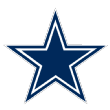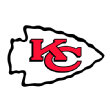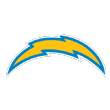Barnwell's NFL fact check: Don't be surprised if these seven things occur

An NFL season lasts only 16 games, but in terms of our memories, it seems to be the only football we can possibly remember. Both fans and analysts alike are subject to recency bias, in which we treat the most recent information we have as the most important information in understanding and projecting a complex game. The NFL moves quickly and has an impossibly high attrition rate. It's easy to forget what happened years ago, much less last season.
In most cases, though, we can look through history to get a sense of what's likely to reoccur from season to season. What happened in 2018 will stay in the record books forever, but there will be plenty of elements and stories from 2018 that won't happen again in 2019, even if it seems as if the circumstances or the talents involved are staying the same.
Let's run through a few of those 2018 stories which might seem likely to reoccur in 2019 and detail why they're not likely to happen again:
Jump to a team:
Don't be surprised if ... Amari Cooper's touchdowns dry up
It's hard to argue against the idea that Cooper transformed the Cowboys in 2018. After Dallas sent a first-round pick to the Raiders to acquire the former Alabama star, Cooper turned around both his own season and his new team. Dallas won seven of its final eight games with Cooper in the lineup, and the star wideout clearly made the difference in two crucial divisional victories. Cooper went off for 180 yards and two touchdowns in a 31-23 win over Washington and topped that with a 213-yard, three-score effort against the Eagles in a 29-23 overtime victory two weeks later. It's a trade the Cowboys clearly won't regret anytime soon.
Cooperracked up 53 catches on 76 targets for 725 yards and six touchdowns over nine games with the Cowboys.Those numbers were good for 105.6 fantasy points, which was seventh in the league over that stretch and ahead of stars like Michael Thomas and Mike Evans. It was a major leap on Cooper's prior nine games with the Raiders, which had produced 28 catches for 461 yards and three touchdowns. Is this the new normal for him?
At the very least, it's fair to figure his touchdown rate will decline. Cooper scored seven touchdowns in nine games with the Cowboys, which prorates to 12.5 scores over a 16-game season. In Oakland, Cooper scored only 19 times in 52 games, for a prorated figure of just under six scores per 16 contests. In an offense in whichEzekiel Elliott will gobble up red zone touches, it's difficult to see Cooper topping 12 touchdowns over a full season.
Some of Cooper's scores came on big plays which might not be repeatable. He scored a 90-yard touchdown on a play in which he was surrounded after the catch by three Washington defensive backs who inexplicably failed to make a tackle. Cooper's three-score game against a banged-up Eagles secondary included a 75-yard scorein which safety Corey Graham appeared to lose the ball in the lights. Those plays still count in the record books, of course, but fans expecting multiple games approaching 200 yards with multiple touchdowns might be disappointed by Cooper in 2019.
Don't be surprised if ... the 49ers improve with (or without) Jimmy Garoppolo
A trendy pick to make the postseason this time last year after going 5-0 with Garoppolo as their starter in 2017, the 49ers started 1-1 before Garoppolo tore his ACLin the middle of a loss to the Chiefs. Kyle Shanahan's team proceeded to lose eight of its next nine games and eventually finished with the league's second-worst record at 4-12. It's unclear whether the 49ers would have made it into the playoffs in a division in which the Rams and Seahawks were both impressive, but once Garoppolo went down, the Niners had no hope.
I mentioned the injury concerns surrounding Garoppolo when I profiled the former Patriots backup last August, and last season did little to quell the biggest question for him. Garoppolo lasted two starts filling in for Tom Brady in 2016 before going down because of a serious sprain of the AC joint in his shoulder. We still haven't seen the 27-year-old make even six starts in a row without getting injured. Health is a skill, and until Garoppolo actually plays a full 16-game season, the 49ers can't count on him for 16 games at a time.
The good news is that Jimmy G will almost surely make it through more than three games this season. I also don't think the 49ers will be doomed in 2019 if they lose their starting quarterback again. For one, they have one of the league's more promising backups in Nick Mullens, who held his own after taking over for C.J. Beathard last season. These stats can't possibly tell the whole story between these two quarterbacks, but it is fair to note that Mullens basically impersonated Garoppolo's performance in the Shanahan offense when you look at their respective numbers in San Francisco:
San Francisco's issues had much more to do with the rest of the team than it did with the play of its quarterback in 2018. For one, the famed Shanahan rushing attack ranked 32nd in rushing DVOA. While Matt Breida posted a superficially impressive 5.3 yards per carry while playing on an ankle that seemed to re-sprain itself several times per game, his inconsistency meant the second-year back was just 30th in the league in success rate. The 49ers gave 177 less impressive carries to Alfred Morris and Jeff Wilson and fumbled a league-high 31 times. With a healthier Breida supplemented by Tevin Coleman and Jerick McKinnon, the 49ers should have more talented runners touching the football in 2019.
San Francisco's defense ranked 27th against the pass by DVOA, but the key number here is two. The 49ers had two interceptions in 2018, and if you find that impossible, I would urge you to look it up. Antone Exum took a Philip Rivers pass to the house in Week 4, and Jaquiski Tartt intercepted Josh Rosen four weeks later. Unsurprisingly, the 49ers set an NFL record for the fewest intercepted passes in one season. The weight of every other team in NFL history suggests that the 49ers will pick off more passes this season.
This should also be a much-improved pass rush after adding Dee Ford and second overall pick Nick Bosa on the edge to replace the likes of Cassius Marsh and Arik Armstead. The 49ers already have an interior pass-rushing star in DeForest Buckner, who had 12 sacks and 20 knockdowns a year ago, and while they haven't been overwhelmed by the production of former first-round picks Armstead and Solomon Thomas, this is suddenly a deep defensive line. There are questions about the secondary, but this should be a much-improved pass defense at multiple levels.
Is the ceiling for the 49ers higher with a full season from the quarterback they signed to a five-year, $137.5 million deal last February? Of course. It would be naive to pretend otherwise. Once Garoppolo went down last season, though, the 49ers weren't good enough in the other elements of the game to stay afloat. This year, some regression toward the mean and improvements on both sides of the ball should raise the floor of their performance.
Don't be surprised if ... the Bears' takeaway rate nosedives
When I wrote last summer about how the Bears were one of the league's most likely teams to improve, I mentioned that a key driver of their improvement was likely to be their interception rate. In 2017, they ranked 14th in defensive DVOA while posting the league's fourth-worst interception rate. Kyle Fuller& Co. racked up only eight interceptions on 529 pass attempts for a Tom Brady-esque pick rate of 1.5%.
In 2018, Chicago returned a virtually identical secondary, with the same five starters who lined up for coordinator Vic Fangio the previous season. With an improved pass rush thanks to the arrival of Khalil Mack, the Bears promptly picked off 27 passes on 615 attempts, with their 4.4% interception rate nearly tripling their prior mark. Fuller, who had six interceptions across his first three seasons as a pro, nearly topped the team's mark from the prior season with seven.
The Bears comfortably led the league in interception rate and total picks; after their 27, the only other team to top 18 picks was the Dolphins at 21. Unsurprisingly, the Bears also led the league in total takeaways with 36, five more than any other team. This offseason, Chicago lost Fangio and slot cornerBryce Callahan to the Broncos, and safetyAdrian Amos to the divisional rival Packers, but with most of their core returning, the Bears might reasonably expect to be a takeaway machine on defense in 2019.
I think they will still be good on defense, of course, but it's tough to see them topping 30 takeaways for the second consecutive season. There's not a strong year-to-year relationship for interception rate, and interceptions on the whole continue to decline. No team has posted an interception rate of 4% or more in back-to-back seasons since the Packers in 2010-11. That was only eight years ago, but from 2011 to 2018, the league's interception rate fell from 2.9% to 2.4%.
Take a look at the breakout defense of 2017 for a recent example. The Jaguars led the league with an interception rate of 4.1% and returned the same secondary (minus nickelback Aaron Colvin) for another season, but managed to pick off only 2.2% of opposing passes in 2018. The Jags fell from second in takeaways to 22nd. Jacksonville still had an effective defense -- it finished sixth in defensive DVOA -- but the flood of takeaways wasn't there.
In Vegas, the Caesars sportsbook posted a prop bet for the Bears' defense in 2019 and set the over/under on their takeaway total at 26. That would still rank among the likely league leaders, even given that it would be a drop of 10 takeaways from Chicago's mark of 2018.
If we're looking for a team that might lead the league in interception rate in 2019, I would look for opportunistic defenses that ranked in the middle of the pack a year ago and point toward the Vikings (15th in interception rate), Chargers (16th), and even the aforementioned Jaguars (18th) as potential candidates.
Don't be surprised if ...Patrick Mahomes is better on deep balls
The most exciting moment in any given week of the NFL season was Mahomes looking downfield and firing. The second-year quarterback produced a stunning debut campaign as the Chiefs' starter, as the league MVP became the second member of the 5,000-50 club with 5,097 passing yards and 50 passing touchdowns in a single season.
Typically, this would be the moment where I'd point out how unlikely it is for any quarterback to produce those numbers in a single season. It's fair to say Mahomes probably won't make it back to the 5,000-50 club again in 2019, if only because a lot has to go right for any passer to make it there in a given year.
In terms of deep passes, though, Mahomes left a fair number of big-play opportunities on the table. The first half of the regular-season loss to the Patriots comes to mind as a place where Mahomes narrowly missed scores. He more than made up for the misses, of course, but it's scary to say that there might even be more chances for him to make magic happen in 2019.
The NFL's Next-Gen Stats define deep passes as throws traveling 20 or more yards in the air and open targets as receivers with three or more yards of separation between themselves and the closest defender. Mahomes attempted 28 deep passes to open receivers last season, 11 more than anybody else in football. He completed 14 of those passes for an even 50%; the rest of the league completed just over 62% of those same throws. Next-Gen Stats also estimates the likelihood of Mahomes completing each of those attempts and projected a completion percentage of 59.3% on those passes, much closer to the league average than his actual mark.
Chances are that Mahomes won't have quite as many receivers running totally free in the secondary as he did in 2018, but given how talented the brilliant Texas Tech product looked last season, I wouldn't be surprised if he was more efficient when those receivers do come free in 2019.
Don't be surprised if ... Sony Michelbreaks out
The Patriots rarely commit meaningful resources to running backs, so it was a surprise when they used one of their first-round picks in 2018 to draft Michel out of Georgia. His debut season in the NFL was about what we would have expected, mixing efficient production with a knee injury and ending with a Super Bowl victory. Michel missed three games and a huge chunk of a fourth with knee issues, but he racked up 931 yards and six touchdowns during the regular season and then added 336 yards with six more scores during the postseason.
There was one thing missing from Michel's profile, though. The 24-year-old posted the league's 11th-best success rate, but he averaged only 4.5 yards per carry, which was 29th among qualifying backs. When you have a back who posts a high success rate with a modest yards per carry figure, that back typically isn't making many big plays. Indeed, on 209 carries, Michel had only four runs of 20 yards or more, and no run of longer than 40 yards.
To put that in context, I went and calculated the same rates for each of the 13 other backs who carried the ball at least 200 times last season. They ran for 20-plus yards on 3.1% of their carries and hit a home run of 40 yards or more 0.8% of the time. Given Michel's 209 carries, we would have expected him to rack up seven runs of 20 yards or more and two 40-plus runs.
Of course, it's fair to point out that a back like Alvin Kamara is way more likely to break a big run than, say, Peyton Barber. What makes Michel's season feel more of an aberration, though, is that he had no trouble creating big plays at Georgia; in particular, the home runs we didn't see from Michel last season. In his three years in a regular role from 2015 to 2017, he had 34 carries of 20 yards or more and nine of 40 yards or more. The guy who ran for a 75-yard score in the Rose Bowl against Oklahoma sure seems like someone who could break big runs at the pro level.
I think the missing big plays amount to an aberration, and we'll see Michel break more big gains this season. The biggest argument against a bounceback might be those knees, given that he has already now undergone two knee operations as a member of the Patriots before starting his second NFL season. RookieDamien Harris could also eat into Michel's role, but the Patriots didn't use a first-round pick on Michel to use him for six or seven carries per game. The touchdown opportunities will be there for Michel, and if he stays healthy -- admittedly a big if -- we could see an even more impressive season outside of the end zone, too.
Don't be surprised if ... Lamar Jackson's running workload is reduced
If you watched Jackson at Louisville, you knew the 2016 Heisman Trophy winner was going to threaten NFL teams with his feet. When Jackson took over for an injured Joe Flaccolast season and led what had been a 4-5 Ravens team on a 6-1 ride to the postseason, it was no surprise to see him stretch opposing defenses as a runner.
What was surprising, though, is just how frequently the Ravens left the ball in Jackson's hands. Including his first-half stretch as an occasional interloper, he carried the ball 147 times. That's the most for any quarterback (minimum: 50 passes) since the AFL-NFL merger in 1970, and it even sells short his workload. Baltimore's first-round pick carried the ball 119 times across his seven starts, averaging 17 carries per contest.
To put that in context, the previous record-holder for the largest rushing workload in NFL history was Bobby Douglass in 1972, who averaged 10.1 carries per game as a 14-game starter. In a similar midseason role, Tim Tebow took over for the Broncos in 2011 and averaged 10.5 carries per start, but even that doesn't come close to what Jackson shouldered as a starter last season.
That's not a sustainable workload for a quarterback. Jackson wasn't even able to sustain seven complete starts under that strain a year ago, as he was replaced by Robert Griffin for stretches in Weeks 13 and 14, including the final two plays of an overtime loss to the Chiefs. Jackson has a solid frame at 212 pounds and is certainly smart enough to avoid unnecessary hits, but you're asking a lot of any player to carry the ball 17 times per week in the modern NFL. That's 272 carries over a full season, a figure only Ezekiel Elliott topped a year ago.
The Ravens promoted Greg Roman to offensive coordinator this offseason, which should have been of no surprise given his success building offenses around running quarterbacks like Colin Kaepernick and Tyrod Taylor in years past. Jackson is a more talented and accomplished runner than either of those predecessors, but neither Kaepernick nor Taylor carried the ball anywhere near as frequently as Jackson did a year ago. The peak for either player came when Taylor racked up 104 carries across 14 starts in 2015, an average of 7.4 carries per contest.
I would expect Jackson to fall back to around 10 carries per game in 2019. The Ravens will still use Jackson as a threat to hold the ball on read-option looks, and he will still scramble for big plays, but they'll hand the ball more to new starter Mark Ingram and count on Jackson to be a more effective passer in his first full season as a starter.
Don't be surprised if ... Melvin Gordontakes a step back
I wrote about the Gordon conundrum in February, before the former first-round pick announced that he was holding out in the hopes of getting a new deal from the Chargers. The Wisconsin standout is entering the fifth year of his rookie deal and coming off what was unquestionably his best season as a pro. If you're making a list of the ways to tell whether a back was an elite talent, though, Gordon would fail most of the criteria.
Last season was the first in which Gordon was an efficient back in four tries. It was the first time he topped 4.0 yards per carry as a pro, and while yards per carry can be a misleading stat, his inefficiency is further confirmed by the infrequency with which he increased his team's chances of scoring by ESPN's Expected Points model. Last season was the first in which Gordon's runs increased his team's expected points rate more than 38% of the time. League average over that time frame for running backs is 39%.
Gordon adds value as a receiver, but he racked up 182 catches for 1,577 receiving yards from 2015 to 2018, which is about what Gio Bernard (166 catches for 1,415 yards) generated with far fewer snaps. You can succeed with this profile if you stay healthy and rack up a bunch of huge runs like Saquon Barkley did a year ago, but Gordon has just one play of more than 50 yards across 1,079 career touches, and he has missed nine games over four seasons, including four in 2018.
Also disconcerting for Gordon's case as a franchise running back is that the Chargers haven't missed him when he has been absent. Over Gordon's four seasons, the Chargers are 26-29 (.472) with Gordon in the lineup, averaging 23.7 points. Without Gordon, the same Chargers have gone 4-5 (.444) while averaging 23.1 points.
To put that in context, the Chargers have also spent a huge chunk of that time without star wideout Keenan Allen, and his absence has been far more meaningful. Philip Rivers& Co. are 23-18 (.561) with Allen in the lineup and just 7-16 (.304) otherwise; they average 24.4 points with Allen in the fold and 22.3 points when the Cal product has been sidelined.
The number that comes up as proof of Gordon's excellence, invariably, is touchdowns. It's ironic given that Gordon failed to score on 217 touches as a rookie, an anomaly which immediately corrected itself the following season. Analyses looking to back Gordon's claims will throw that season out as if it doesn't count, but over his full four-year career, he has now scored 38 touchdowns.
Those touchdowns are the fifth most of any NFL player since 2015. Does Gordon have a knack for scoring more than a typical player in the same situations? I'm skeptical. When you look at how he has performed inside the 5-yard line, where backs are going to accrue the bulk of their touchdowns, he has been about average. Given the chances of any NFL back scoring from each spot inside the 5-yard line and Gordon's various opportunities from those spots, we would have expected Gordon's 41 attempts to deliver 17.5 touchdowns. Gordon has topped that mark by scoring ... 18 touchdowns, or an extra half-touchdown every four years. He has been an average back near the goal line.
The case for Gordon as a transcendent back relies upon his ability to score TDs outside of goal-to-go situations and playing the way he did on a carry-by-carry basis in 2018 while simultaneously staying healthy. It's certainly possible that the guy we saw last season shows up for a second time and plays 16 games in 2019, but history suggests that Gordon is likely to fall short.












